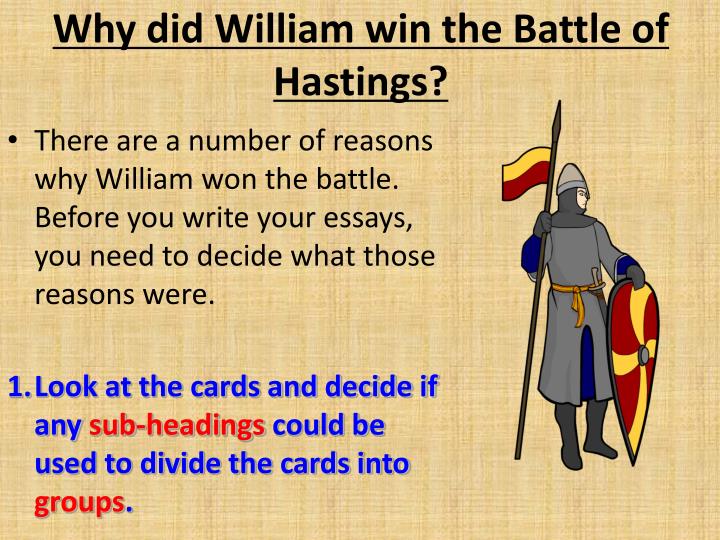Prelude to the Pivotal Conflict
The Battle of Hastings, a defining moment in English history, unfolded on October 14, 1066, pitting the invading Norman forces of William the Duke of Normandy against the English army led by King Harold Godwinson. The outcome of this battle would forever alter the political landscape of England, ushering in a new era of Norman rule that would profoundly shape the future of the nation.

Image: slidetodoc.com
William’s conquest had been meticulously planned and executed. Upon hearing the news of King Edward the Confessor’s death and Harold’s subsequent coronation, William swiftly assembled an invasion force of seasoned warriors and embarked on a daring voyage to claim his rightful inheritance to the English throne.
The Opposing Forces
The Norman army boasted a formidable force of skilled cavalry and infantry, including archers and crossbowmen. They were highly trained in battle tactics, wielding advanced weapons and employing effective strategies that had proven successful in previous campaigns. William’s leadership and strategic prowess had earned him a reputation as a brilliant military commander.
King Harold, on the other hand, had limited time to marshal his forces but nonetheless assembled a loyal and valiant army, predominantly composed of seasoned fyrdmen—citizen soldiers who fought on foot—supplemented by a contingent of housecarls—professional warriors of noble lineage. Harold’s troops were renowned for their courage and loyalty, but they lacked the training and equipment of their Norman adversaries.
Clash on the Battlefield
As the two armies converged at the Senlac Hill, a bloody and protracted battle ensued. The Norman cavalry charged into the English lines, supported by a barrage of arrows and bolts from their archers. The English fyrdmen stood firm, forming a formidable shield wall with their dense ranks of overlapping overlapping axes, pikes, and spears. For hours, the Norman knights clashed against the impenetrable English wall, but to no avail. The battle reached a stalemate.
Recognizing that brute force alone would not suffice, William employed a cunning tactic. His cavalry feigned retreat, luring the English warriors out of their defensive formation in pursuit. As the English forces broke their lines, the Norman cavalry wheeled around and attacked with renewed vigor, exploiting the gaps in the English ranks.
Harold’s Demise and William’s Victory
With the English army in disarray, William’s cavalry surged forward, targeting King Harold himself. Harold, a valiant warrior, fought valiantly, felling several Norman knights before he was slain by a combination of sword and arrow wounds. His death marked the turning point of the battle.
As news of Harold’s demise spread through the English ranks, the will to resist crumbled. The fyrdmen, now demoralized, broke their ranks and fled the battlefield. Only a small contingent of Harold’s housecarls remained, fighting until their last breath in a futile but heroic effort to defend their king and their homeland. By nightfall, William’s forces had triumphed, securing a decisive victory that would seal his conquest of England.
In the aftermath of the battle, William was crowned King of England on Christmas Day, 1066, in Westminster Abbey. The Battle of Hastings had irrevocably changed the course of English history, marking the end of Anglo-Saxon rule and the beginning of the Norman era that would endure for centuries to come.

Image: www.slideserve.com
The Battle Of Hastings Why Did William Win
Aftermath and Legacy
William’s conquest had profound and far-reaching consequences for England. The Norman Conquest introduced a new culture and political structure, bringing with it significant changes in language, law, and administration. The English nobility was largely replaced by Norman barons who wielded considerable power and influence.
The Norman Conquest also brought about the construction of numerous castles and fortifications across England, serving as symbols of Norman dominance and instruments of control over the conquered populace. William’s introduction of the feudal system, a complex social and political arrangement based on land ownership and military service, reshaped English society and laid the foundations for the centralized government that would emerge in the centuries to come.
The Battle of Hastings remains a significant historical event that continues to captivate the imagination of historians, scholars, and the general public alike. It is a testament to the resilience, bravery, and strategic acumen of both sides involved, forever etched in the annals of English history as a pivotal moment that shaped the nation’s destiny.
